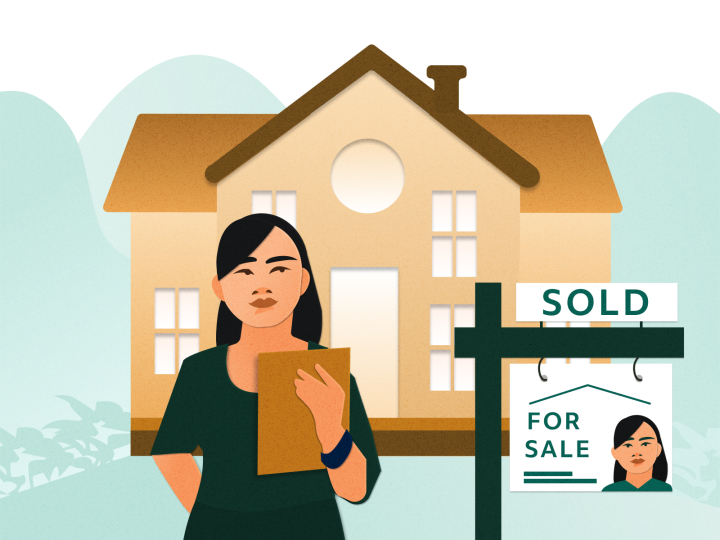The Future of Real Estate: Patterns and Opportunities to Watch
As the real estate landscape evolves, it ends up being progressively important to comprehend the arising fads and chances that will specify the market in the coming years. Technical improvements are reshaping transactional procedures, while an expanding focus on sustainability reflects transforming consumer top priorities. In addition, demographic changes and the increase of remote work are affecting real estate preferences, particularly in suburbs. With these characteristics at play, a better evaluation of the adjustments and methods necessary for success discloses interesting possibilities that might reshape investment strategies and market behaviors.
Technological Advancements in Property
In current years, the actual estate field has actually embraced a wave of technical advancements that are changing typical methods. One of the most noteworthy innovations is the rise of large data analytics, which enables real estate specialists to analyze market trends, predict building worths, and determine financial investment opportunities with unmatched accuracy.
Furthermore, virtual reality (VIRTUAL REALITY) and increased truth (AR) modern technologies are revolutionizing building advertising by supplying immersive experiences for potential purchasers and lessees. These tools enable clients to carry out virtual scenic tours of homes, thereby enhancing the search procedure and boosting consumer interaction. Blockchain modern technology is getting grip as a means to protect purchases and preserve transparent documents, thus lessening scams and expediting the closing procedure.
Smart home innovations are likewise becoming progressively widespread, allowing property owners to monitor and regulate their buildings from another location (Real Estate Lockhart). Jointly, these technological technologies are improving the landscape of genuine estate, fostering a much more efficient, transparent, and customer-centric market
Need for Lasting Characteristics
As customers progressively focus on ecological obligation, the need for lasting properties has actually risen in the genuine estate market. This change mirrors a broader societal pattern toward sustainability, with financiers and property buyers seeking residential or commercial properties that reduce eco-friendly influence while optimizing energy performance. Functions such as solar panels, energy-efficient appliances, and sustainable building materials are currently viewed as important instead of optional.

In addition, the increase of environmentally friendly areas, which focus on walkability and access to mass transit, further highlights this pattern. These developments appeal to eco mindful customers and promote a much healthier lifestyle.
As the need for sustainable residential properties remains to climb, market stakeholders have to adapt to these assumptions. By prioritizing and welcoming innovative techniques sustainability, the genuine estate industry can not just meet consumer need but additionally add to a much more sustainable future.
Transforming Buyer Demographics

Additionally, the aging population is reshaping need for housing. Baby boomers are looking for scaled down houses that supply ease of access and reduced maintenance, often favoring urban you could look here settings with close-by services. This shift requires an emphasis on multi-generational housing solutions that suit varying needs.
Furthermore, cultural diversity is playing a crucial duty in genuine estate fads. As these demographic changes proceed to progress, real estate anchor professionals have to adapt their strategies to resolve the demands of these varied buyers (Real Estate Lockhart).
Surge of Remote Job Impact
Increasingly, the rise of remote work is transforming the real estate landscape, triggering significant shifts in buyer preferences and place options. As workers delight in the versatility of functioning from home, several are reviewing their residential needs, resulting in a rise sought after for buildings in suv and country locations. This fad is primarily driven by the wish for even more roomy living atmospheres that can suit home workplaces and a much better lifestyle.
Additionally, urban facilities, once the focal factor for purchasers, are seeing a gradual decrease popular as people prioritize affordability and accessibility to nature. Consequently, property programmers and capitalists are shifting their focus towards residential or commercial properties that offer home office areas, outside features, and distance to crucial services.
This advancing landscape demands a reevaluation of standard market strategies. Actual estate professionals need to adapt to the changing choices of customers, stressing the value of way of living consider their advertising and marketing methods. In addition, builders are significantly prioritizing versatile layout that satisfy the dual demands of living and working, making sure that they stay competitive in a swiftly changing market. The effects of remote work with actual estate are extensive, shaping future patterns and opportunities.
Investment Opportunities in Arising Markets
Financial investment chances in look these up arising markets are regularly attracting interest from investor looking for diversity and development capacity. These markets, identified by rapid economic growth, increasing urbanization, and an expanding center class, present one-of-a-kind prospects for savvy financiers. Countries in Southeast Asia, Africa, and Latin America are seeing substantial infrastructure renovations and desirable federal government plans, which additionally improve their appeal.
Property markets such as household, commercial, and logistics are experiencing increased demand because of city migration and developing consumer preferences. Significantly, cities like Ho Chi Minh City, Nairobi, and Medellín are becoming hotspots for financial investment because of their expanding economic climates and younger demographics.
Capitalists ought to conduct thorough market analyses to identify crucial fads, such as changes in population characteristics and financial security, which can affect home worths. In addition, collaborations with local genuine estate firms can promote effective access and navigating in these markets.
However, it's essential to be conscious of prospective dangers, including political instability and regulatory obstacles. By weighing these elements and adopting a long-term viewpoint, investors can effectively maximize the profitable possibilities arising in these establishing regions.

Conclusion
In conclusion, the future of genuine estate will be substantially influenced by technical innovations, an expanding focus on sustainability, and progressing buyer demographics. Browsing this transforming landscape will call for critical partnerships and a keen understanding of market characteristics to take advantage of on the fads forming the industry.
As the genuine estate landscape develops, it becomes progressively important to comprehend the emerging fads and possibilities that will specify the sector in the coming years. One of the most notable innovations is the rise of large information analytics, which enables actual estate experts to assess market patterns, forecast residential property values, and determine financial investment possibilities with unprecedented precision.As consumers progressively prioritize environmental responsibility, the demand for lasting residential properties has actually risen in the actual estate market. The implications of remote work on actual estate are profound, shaping future fads and chances.
Investment possibilities in arising markets are regularly drawing in focus from genuine estate capitalists seeking diversity and development capacity.